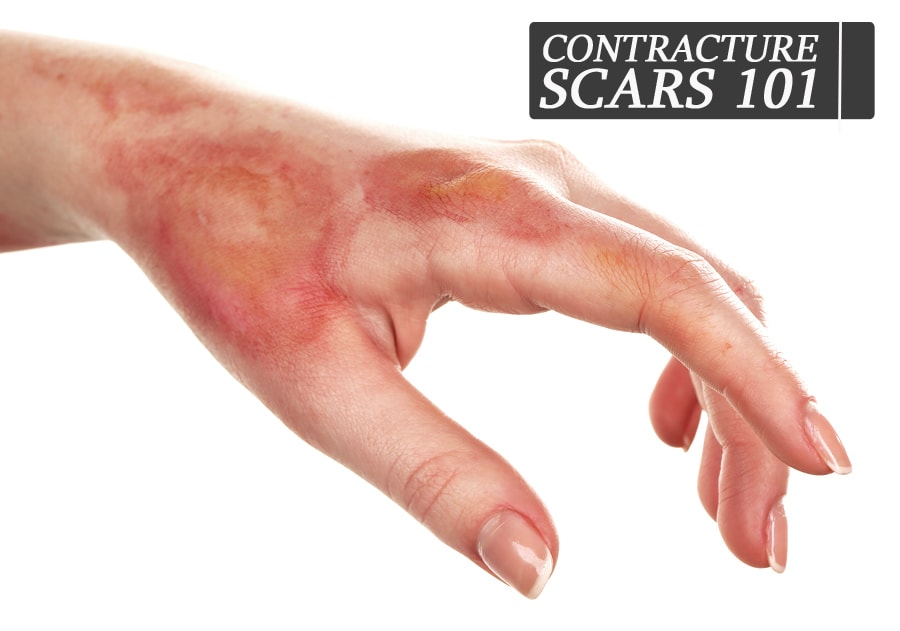
The skin protects the organs from within and has the ability to repair itself after an injury such as a cut or scrape, insect bite, acne, infection surgery or burn. As the body heals itself, scar tissue forms because the natural skin has been damaged beyond its first layer. The scar tissue conceals the open wound to stop blood loss and to keep bacteria from entering the wound. While there are many types of scars, contracture scars are the most troublesome of the four.
What is a Contracture Scar?
A contracture scar is usually the result of a second or third degree burn. The burn scar contracture can also occur due to a large open wound with associated tissue loss. Burn scars can severely hinder a person’s mobility especially if the damaged skin is on or near a person’s joint.
The decreased mobility is a result of the contracture scar tightening the underlying tissues and impacting the muscles, tendons and nerve functions. The injured area can become extremely tight due to the fact that the fibrosis tissue supporting the muscle or joint becomes resistant to stretching.
The shortening of the muscle can eventually lead to permanent disability due to the fact that the muscle fibers, which normally provide motion, will lose their ability to contract and relax. This extreme result depends on the depth and severity of the injury.
Common Treatments
Small contracture scars which do not hinder movement can usually be treated with topical ointments. These over-the-counter creams should allow the scar to expand and move adequately. Silicone gel sheets can be used to help speed the healing process, reduce pain and alleviate the redness which occurs in some scars.
Even though a second or third degree burn can result in a contracture scar, patients may be able to prevent or lessen the affect of the scar by wearing a pressure garment during the healing period.
Patients who have a severe burn located on, or near, a joint may be placed in a splint to help keep the joint straight, limit the degree of wound contraction and prevent contracture scars from forming. A physical therapist may provide some range of motion exercises to help keep the muscles and joints flexible.
Surgical Treatments
Surgery might be necessary if a patient’s scar covers a large area of the body or severely impacts movement. The most common surgical procedures for contracture scars are:
- Skin grafting – The process of removing the scar tissue and replacing it with healthy skin from another part of the patient’s body.
- Skin flap surgery – This is similar to the skin grafting method except the flap of skin has its own blood supply. The skin flap includes the underlying blood vessels, fat and muscles and is used when the damaged area does not have a good supply of blood due to damaged vessels.
- Z-plasty – A procedure used to improve a scar by making a Z-shaped incision in order to decrease the quantity of contractures from the surrounding skin. This technique may also create the appearance of natural creases within the skin by using small stitches to hold the skin in place.
Pricing and Conclusion
Depending on the technique used by the doctor, as well as the size of the scar, the revision surgery can cost anywhere from $500-$3000. A scar should be fully healed before attempting to make surgical revisions or the final results may not be what the patient desires. After scar revision surgery, the patient will need to use scar healing treatments such as silicone gel sheeting, compression garments, splints and range of motion exercises in order to gain the best possible outcome.
